
Lord Peter Melchett, former chair of Wildlife Link and Executive Director of Greenpeace until 2001. (Greenpeace/Davison)
UK Office: Canonbury Villas, London N1 2PN
Executive director: Peter Melchett (until December 2001)
The link body
Wildlife and Countryside Link (and predecessors)
Wildlife and Countryside Link (originally Wildlife Link) is an umbrella body representing 34 voluntary bodies in the UK with a total of six million members. It is funded by the member organisations, which also take turns to chair its meetings, plus donations from WWF-UK, the Department of the Environment, Transport and the Regions (DETR), English Nature and the Countryside Agency. It functions through various working groups and ‘task forces’, as well as ‘one-off initiatives’ covering a wide range of environmental issues at home and abroad, including rural development, trading in wildlife, land-use planning and the marine environment. Wildlife Link has played an important co-ordinating role in shaping current wildlife protection policies, enabling the voluntary bodies to pool their resources and experience and present a common agenda. It has a small secretariat based in London. In keeping with the spirit of devolution, there are now separate Wildlife and Countryside Links in Scotland, Wales and Northern Ireland.
The need for an umbrella body to represent the proliferating voluntary societies was appreciated as early as 1958, when the Council for Nature was formed as a voice for some 450 societies and local institutions, ranging from specialist societies to local museums and local field clubs. Headed by the glitterati of the 1960s conservation world, it helped to establish nature conservation in hearts and minds with events like the two National Nature Weeks and the three Countryside in 1970 conferences. It also helped to set up the Conservation Corps, later to become the BTCV (p. 70), while the Council’s Youth Committee, under Bruce Campbell, did its best to ‘make people of all ages conscious of their responsibility for the natural environment’ (Stamp 1969). Its publications were a monthly broadsheet, Habitat , and a twice-yearly News for Naturalists .
Despite its influence, the Council for Nature was always short of money. By the mid-1970s, it was ailing badly, and four years later had ceased to function. Its publication Habitat was continued by the Council for Environmental Conservation (CoEnCo, now the Environment Council) while its function as an umbrella body was taken on by the newly founded Wildlife Link, then a committee of CoEnCo under Lord (Peter) Melchett. Wildlife Link scored an early success with the Wildlife and Countryside Act (see next chapter). In 1993 the name was changed to Wildlife and Countryside Link to emphasise its wider remit.
Secretariat: 89 Albert Embankment, London SE1 7TP.
Chair: Tony Burton (2001).
| Members of Wildlife and Countryside Link |
| Bat Conservation Trust |
| British Association of Nature Conservationists |
| British Ecological Society |
| British Mountaineering Council |
| British Trust for Conservation Volunteers |
| Butterfly Conservation |
| Council for British Archaeology |
| Council for National Parks |
| Council for the Protection of Rural England(CPRE) |
| Earthkind |
| Environmental Investigation Agency |
| Friends of the Earth |
| Greenpeace |
| Herpetological Conservation Trust |
| International Fund for Animal Welfare |
| Mammal Society |
| Marine Conservation Society |
| National Trust |
| Open Spaces Society |
| Plantlife |
| Ramblers’ Association |
| Royal Society for the Prevention of Cruelty to Animals (RSPCA) |
| Royal Society for the Protection of Birds (RSPB) |
| The Shark Trust |
| Universities Federation for Animal Welfare |
| Whale & Dolphin ConservationSociety |
| The Wildfowl & Wetlands Trust |
| The wildlife trusts |
| Woodland Trust |
| World Conservation Monitoring Centre |
| Worldwide Fund for Nature – UK |
| Young People’s Trust for the Environment& Nature Conservation |
| Youth Hostels Association (England & Wales) |
| Zoological Society of London |
The special interest groups
The British Association of Nature Conservationists (BANC)
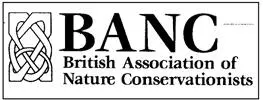
BANC was founded in 1979, and acts mainly as a forum for practising conservationists and planners through its influential journal, Ecos . Something of a trade journal, Ecos usually contains short articles on a wide range of conservation-related subjects, as well as news and reviews. BANC also holds conferences on particular topics, and publishes pamphlets on issues ranging from conservation ethics to feminism.
The British Trust for Conservation Volunteers (BTCV)

Established as the Conservation Corps in 1959, the BTCV organises practical tasks for people who wish ‘to roll up their sleeves and get involved’. A sister organisation was formed in Scotland in 1984. It runs some 200 courses each year for up to 130,000 volunteers on habitat management, such as footpath maintenance, fencing, hedge laying and dry-stone walling, along with wildlife gardening and developing leadership skills. It also works in partnership with local authorities and with government schemes such as the Millennium Volunteers. BTCV organises weekend residential projects and ‘Natural Break’ working holidays; for example, 29,000 volunteers assisted the National Trust to the tune of 1.7 million hours in 1994-95, ‘the equivalent of one thousand full-time staff’. Among its publications is The Urban Handbook , a guide to community environmental work. Its hands-on, open air, communal approach appeals particularly to the young. Its quarterly newsletter is Greenwork . Mission: ‘ Our vision is of a world where people value their environment and take practical action to improve it .’
Head office: 36 St Mary’s Street, Wallingford, Oxfordshire OX10 OEU.
British Trust for Ornithology (BTO)
The BTO was established in 1933 as a research and advisory body on wild birds. Its main task is the long-term study and monitoring of British bird populations and their relationship with the environment. From just one full-time administrator in the 1960s, it has grown into a leading scientific institution with a staff of over 50 and an annual income of nearly £2 million, mainly from funds and appeals. The Trust’s work is a fusion of ‘amateur enthusiasm and professional dedication’, its members acting as a skilled but unpaid workforce. Among its many schemes are the long-running Common Bird Census and its replacement, the Breeding Bird Survey, which it runs jointly with the RSPB and JNCC. Other projects include a Nest Record Scheme, the Seabird Monitoring Programme, special surveys of wetland, grassland and garden birds, the census of special species such as skylark and nightingale, and the administration of the National Bird Ringing Scheme. The Trust also helps organise special events such as the recent Norfolk Birdwatching Festival, and contributes to bird study internationally. It publishes the world-renowned journal Bird Study , currently reaching its 48th volume, as well as a bimonthly newsletter, BTO News , and a quarterly magazine, Bird Table . Membership: 11,490. Mission: to ‘ promote and encourage the wider understanding, appreciation and conservation of birds through scientific studies using the combined skills and enthusiasm of its members, other birdwatchers and staff .
Читать дальше
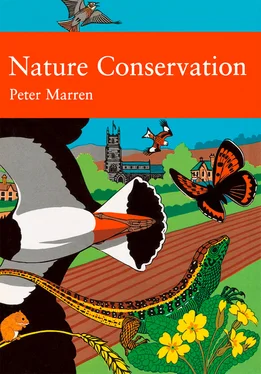




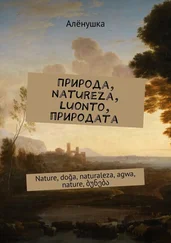

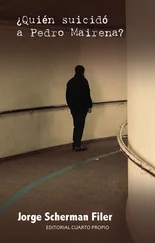
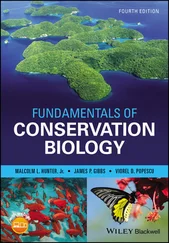





![Various - Birds and Nature, Vol. 12 No. 5 [December 1902]](/books/745517/various-birds-and-nature-vol-12-no-5-december-thumb.webp)
![Various - Birds and Nature Vol. 11 No. 2 [February 1902]](/books/745533/various-birds-and-nature-vol-11-no-2-february-1-thumb.webp)